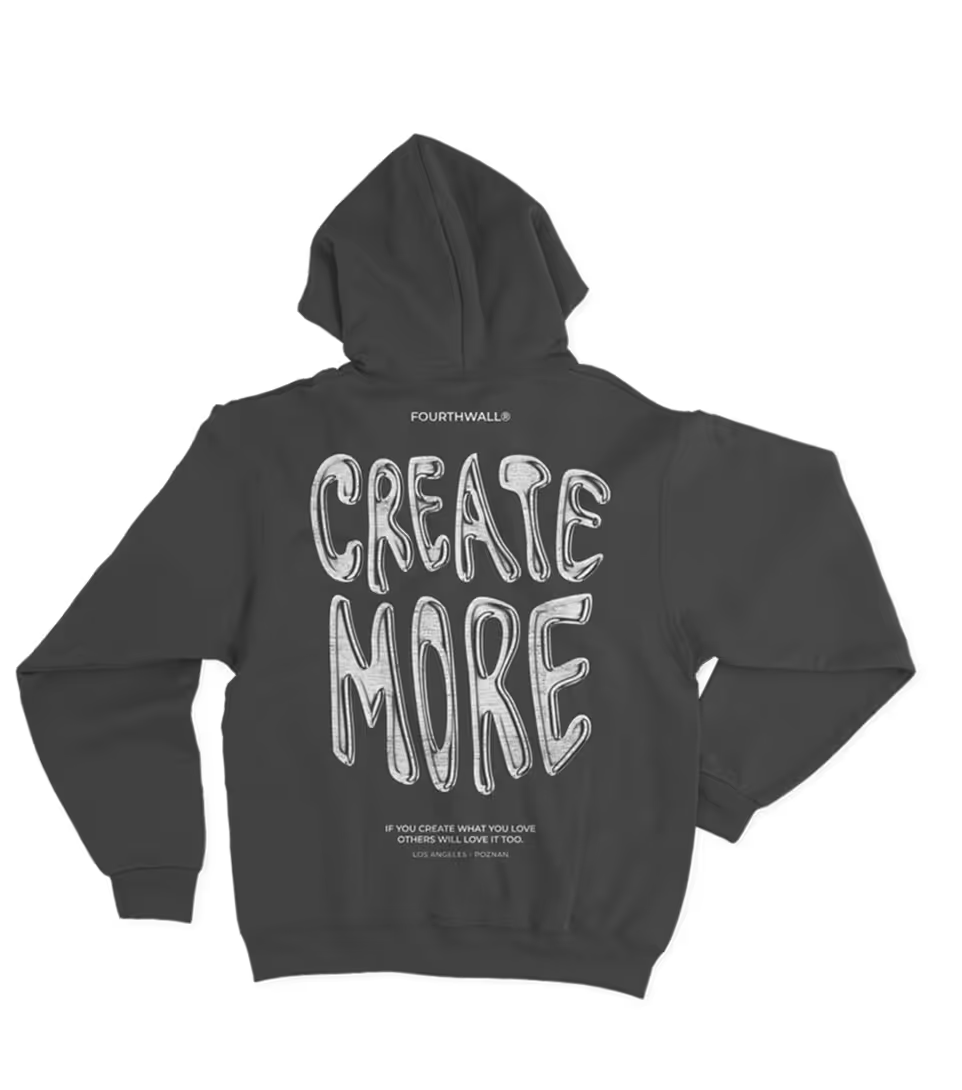Top 12 Ecommerce Trends to Watch in 2025
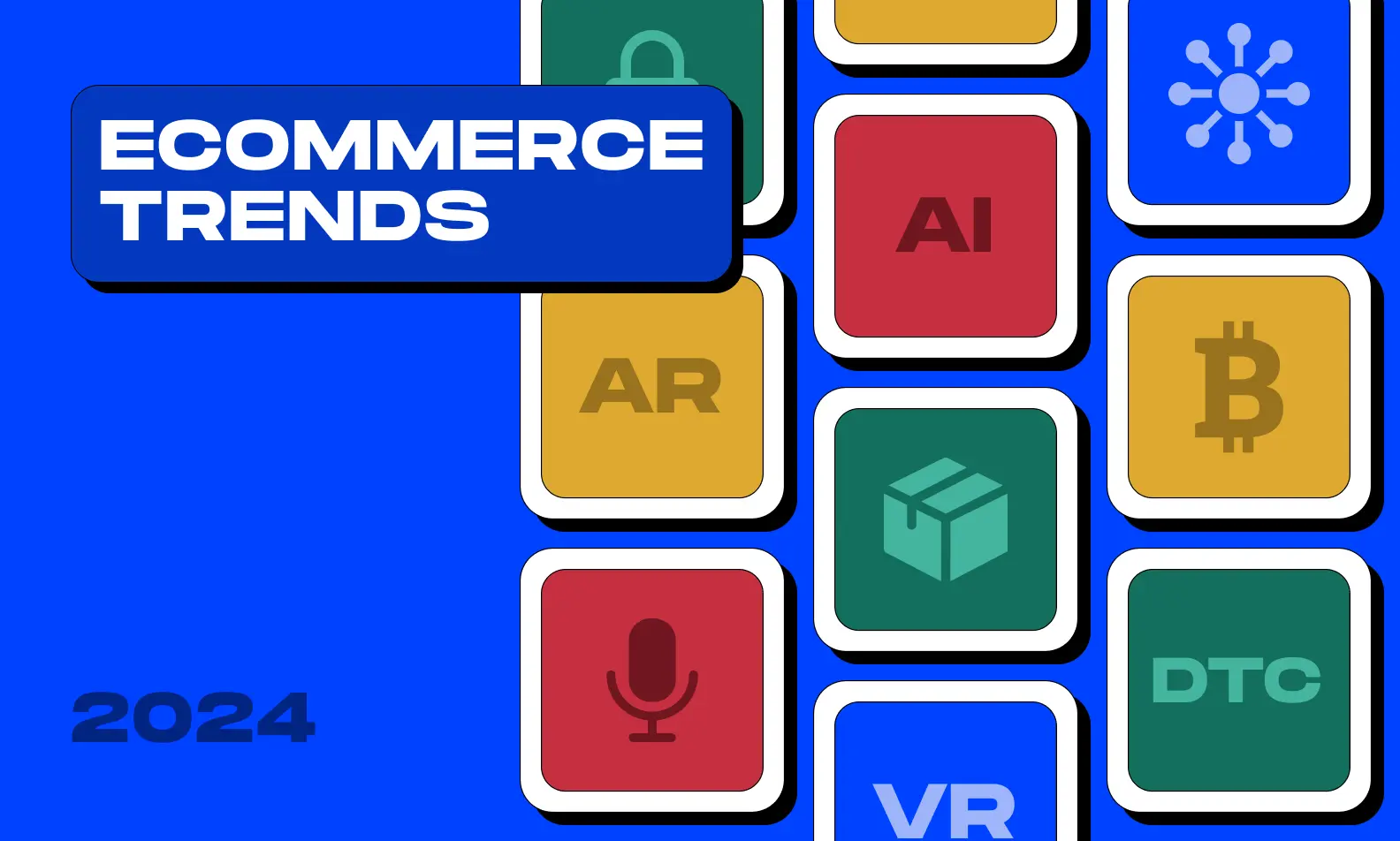
The ecommerce market is constantly evolving, driven by technological innovations and changing consumer behaviors. In 2025, online shopping has gone beyond mere convenience—it's about crafting personalized, immersive, and frictionless experiences that meet the expectations of today’s savvy consumers.
With ecommerce expanding rapidly, businesses must stay ahead by embracing the latest trends shaping the industry. This article explores the top 12 ecommerce trends you should use to help improve your online store, from social commerce and AI-driven personalization to the rising demand for sustainability and fast, flexible shipping. Discover how these trends can help businesses remain competitive and determine which strategies are most relevant to your unique goals.
Top 12 Ecommerce Trends in 2025
Here are some of the top ecommerce trends that are redefining the industry:
1. Sustainable Shopping
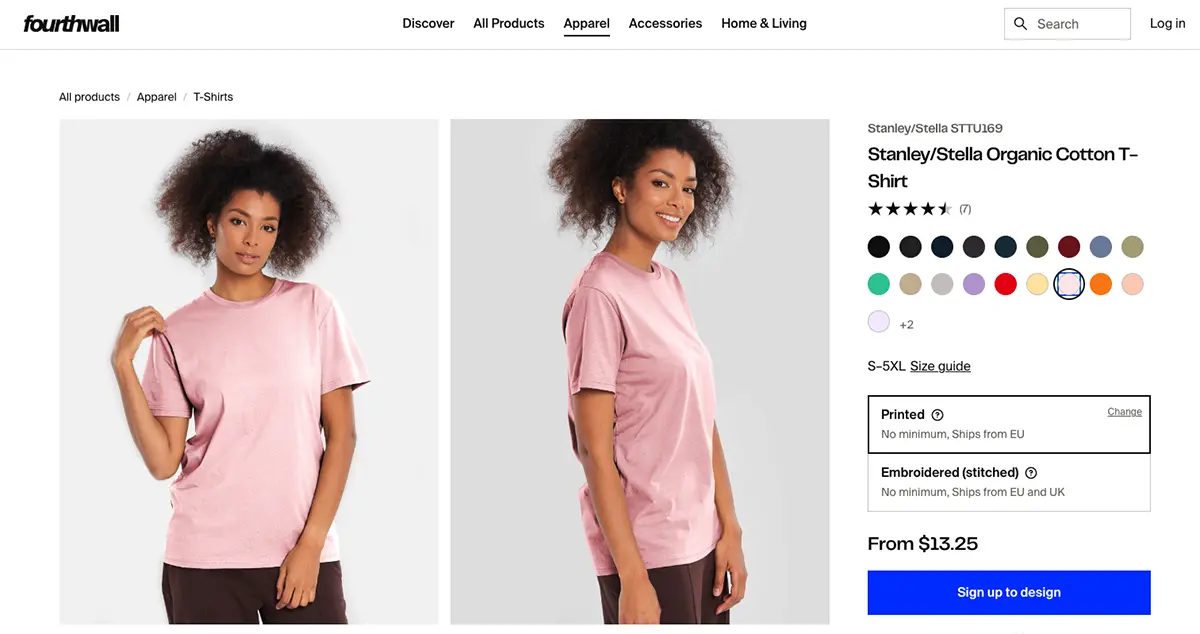
Sustainability is becoming a critical factor for consumers who are increasingly conscious of the environmental impact of their purchases. Sustainable shopping refers to the practice of making purchasing decisions that prioritize eco-friendly products, ethical sourcing, and reducing waste.
Ecommerce businesses embracing sustainability can attract a growing segment of eco-conscious shoppers. This trend is driven by customer demand for transparency and responsibility, with consumers often willing to pay a premium for products that align with their values. Technological advancements in supply chain management and eco-friendly materials are also driving this shift.
Platforms like Fourthwall are making it easier for content creators to adopt sustainable practices by offering eco-friendly products within their catalog. Creators can design and sell items made from organic cotton, recycled fabrics, and other sustainable materials. Additionally, Fourthwall’s print-on-demand model helps reduce overproduction and waste, making it a suitable choice for environmentally conscious creators.
Businesses should consider integrating sustainable practices into their operations, such as reducing packaging waste, offering carbon-neutral shipping options, and sourcing materials ethically. Transparency in these efforts is key; clear communication about sustainability initiatives can enhance brand reputation and customer loyalty. By leveraging platforms like Fourthwall, creators can combine sustainability with their ecommerce strategy to better connect with eco-conscious audiences.
2. Personalization and AI
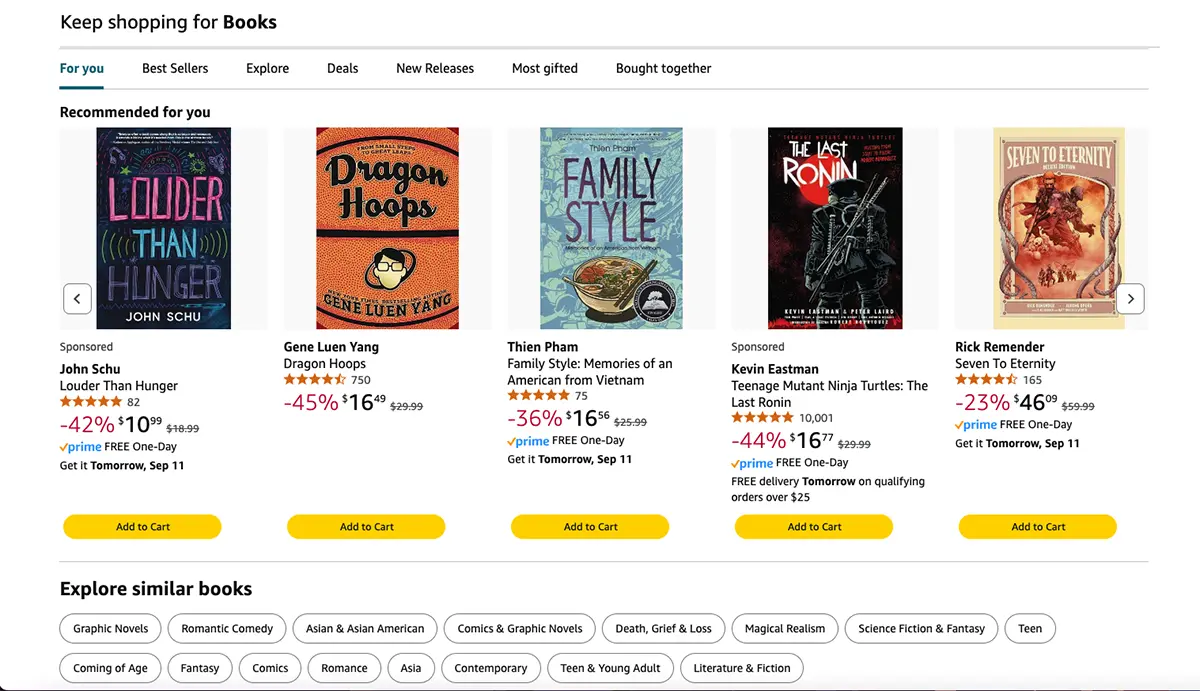
Personalization involves tailoring the shopping experience to individual customers based on their preferences, behaviors, and purchase history. AI-driven personalization uses algorithms and machine learning to analyze data and deliver highly targeted content, product recommendations, and marketing messages.
Personalization powered by AI is transforming how businesses interact with customers, leading to increased engagement, higher conversion rates, and improved customer satisfaction. As AI technology continues to advance, ecommerce businesses can offer more sophisticated and relevant shopping experiences.
Amazon's recommendation engine is a prime example of AI-driven personalization, using data to suggest products that align with each shopper's interests. Similarly, Netflix uses AI to personalize content recommendations, enhancing the user experience.
Ecommerce businesses can start by leveraging AI tools to analyze customer data and implement personalized marketing strategies. These could include dynamic product recommendations, personalized email campaigns, and tailored content on ecommerce platforms. The goal is to create a shopping experience that feels unique to each customer.
3. Voice Commerce

Voice commerce refers to the use of voice-activated devices like smart speakers, virtual assistants, and AI-powered chatbots to make purchases. As voice recognition technology advances, more consumers are turning to devices like Amazon Alexa, Google Assistant, and AI chatbots embedded in speakers for online shopping. These tools enable customers to interact with ecommerce platforms conversationally, making the shopping experience faster, easier, and hands-free.
Voice commerce is reshaping how consumers search for and buy products, offering convenience, especially in mobile commerce, as users can shop on the go using voice commands. AI chatbots are also playing a key role, allowing online shoppers to interact with them through smart speakers. These chatbots provide real-time assistance, answering questions, recommending products, and even completing purchases, enhancing the overall shopping experience.
Walmart has integrated voice shopping into its mobile app, enabling customers to add items to their carts via voice commands. Similarly, Domino's Pizza's voice-activated chatbot, Dom, lets customers place orders, customize pizzas, and track deliveries using voice commands for a seamless, hands-free experience.
To capitalize on voice commerce, ecommerce businesses should optimize their websites for voice search, ensuring product descriptions and metadata match how consumers would verbally request information. Additionally, developing custom skills or actions for popular smart speakers and chatbots can open new avenues for customer engagement and sales.
4. Augmented Reality (AR) and Virtual Reality (VR)

AR and VR technologies enhance online shopping by allowing customers to visualize products in their own space or experience immersive virtual environments. This trend bridges the gap between online and offline shopping, making it easier for consumers to make informed purchasing decisions.
AR and VR can significantly improve the customer experience by reducing uncertainty and enabling shoppers to interact with products before buying. This can lead to higher conversion rates and lower return rates, as customers are more likely to be satisfied with their purchases.
IKEA's AR app allows customers to place virtual furniture in their homes to see how it fits and looks before purchasing. Similarly, beauty brands like Sephora use AR to let customers try on makeup virtually, enhancing the online shopping experience.
Ecommerce businesses should explore integrating AR and VR into their shopping platforms, particularly for products where visualization is key, such as furniture, fashion, and beauty. Partnering with AR/VR developers can help create customized experiences that resonate with target audiences.
5. Social Commerce
Social commerce refers to the integration of social media platforms with ecommerce, allowing users to shop directly through apps like Instagram, Facebook, and TikTok. This trend is fueled by the growing influence of social media on consumer behavior and the seamless shopping experiences these platforms offer.
Social commerce enables businesses to reach customers where they spend a significant amount of time—on social media. By creating a direct link between social engagement and ecommerce, this trend boosts sales through targeted ads, influencer partnerships, and user-generated content.
Platforms like Fourthwall take this a step further by offering ecommerce integrations that allow content creators to sell products directly through YouTube Shopping, TikTok Shop, Twitch Gifting, and Instagram and Facebook Shopping. These integrations streamline the shopping experience for fans, turning social interactions into immediate purchase opportunities.
With Fourthwall's integration features, creators can promote their products through YouTube videos, share them during TikTok livestreams, or promote them via Instagram posts and stories, making the shopping process as seamless as possible.
For content creators and businesses, building a strong social media presence and utilizing these integrated shopping features is essential. Partnering with influencers and encouraging user-generated content can further amplify brand visibility, driving sales through social commerce channels. By leveraging Fourthwall's ecommerce tools, creators can seamlessly connect their social media activity to their online stores, maximizing reach and revenue potential.
6. Subscription Models

Subscription models involve offering products or services on a recurring basis, creating a steady revenue stream, and fostering long-term customer relationships. This trend is prevalent across various sectors, including beauty, food, and entertainment.
Subscription models can enhance customer loyalty and lifetime value by providing consistent, personalized experiences. They also enable businesses to predict revenue more accurately and engage with customers on a regular basis.
Brands like Dollar Shave Club and Blue Apron have successfully implemented subscription models, offering curated experiences that keep customers returning for more. These models not only simplify the purchasing process for customers but also build a reliable revenue stream for businesses.
For content creators using Fourthwall, subscription models can be a powerful tool for monetization. Fourthwall allows creators to offer tiered memberships to their fans, providing various levels of access and exclusive content. This approach not only generates consistent income but also deepens the connection between creators and their audiences.
Whether it's through exclusive merchandise, behind-the-scenes content, or special perks, tiered memberships can enhance the overall fan experience and drive ongoing engagement.
7. Omnichannel Experience
An omnichannel experience involves delivering a seamless and consistent shopping journey across multiple platforms, including online stores, mobile apps, and social media channels.
In today’s digital landscape, consumers expect to interact with brands across various touchpoints effortlessly. An effective omnichannel strategy not only meets these expectations but also enhances customer satisfaction and retention by providing convenience and flexibility.
For content creators using Fourthwall, this means offering a unified shopping experience through their online store, mobile app, and social media channels. Fourthwall enables creators to maintain consistent branding and customer service across all these platforms, ensuring that their fans have a smooth and integrated shopping experience no matter where they engage with the brand.
Just as Nike integrates its website, app, and physical stores to provide a cohesive customer experience, Fourthwall supports creators in creating a seamless connection between their online store, mobile app, and social media channels.
This integration allows for a unified brand presence and ensures that creators can engage with their audience effectively across various digital touchpoints. Investing in such an omnichannel approach is essential for staying competitive and meeting the diverse needs of today’s consumers.
8. Direct-to-Consumer (DTC)
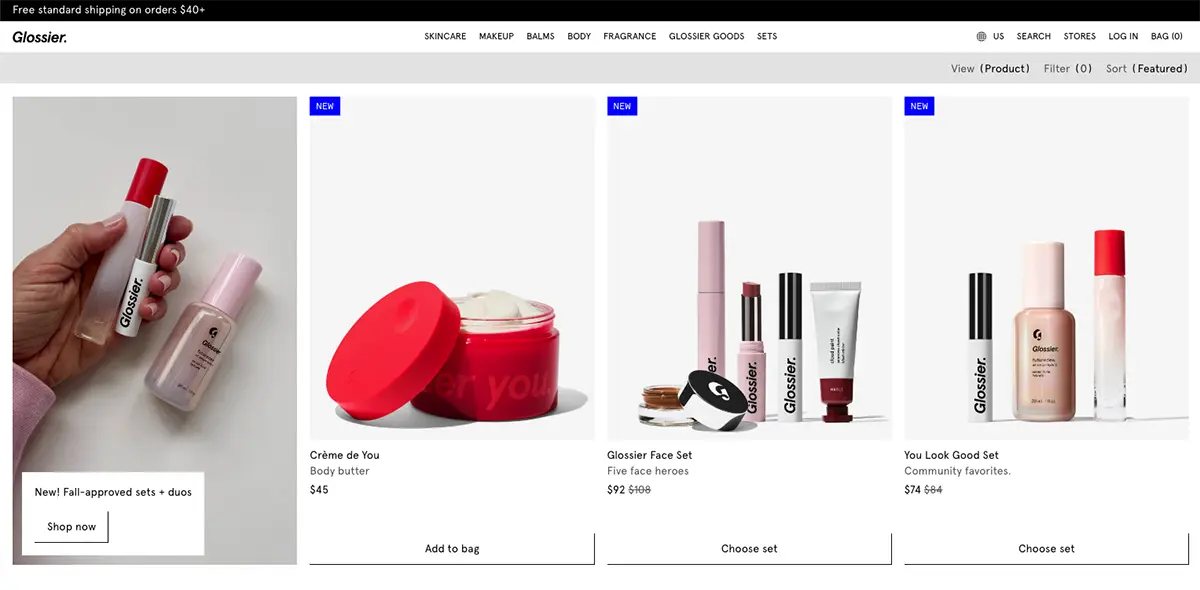
The Direct-to-Consumer (DTC) model involves brands selling directly to customers through their own online platforms, bypassing traditional retail channels. This approach allows businesses to maintain greater control over their brand narrative, customer experience, and profit margins.
By leveraging the DTC model, creators can enjoy higher profit margins, build stronger customer relationships, and exercise greater flexibility in their product offerings. Brands like Warby Parker and Glossier have successfully differentiated themselves by selling their products directly through their own platforms.
This has allowed them to effectively engage with their customers, gain valuable insights into consumer behavior, and adapt their offerings based on direct feedback, ultimately fostering a more personalized and responsive brand experience.
Ecommerce platforms like Fourthwall also enhance this model by enabling creators to sell directly to their fans through a personalized online store. This direct sales approach creates a more intimate connection between creators and their audience, allowing creators to deliver unique products and experiences without the need for third-party retailers.
Creators interested in adopting a DTC strategy should focus on building a robust online presence and optimizing their customer experience. Utilizing Fourthwall’s tools for direct sales, including creating a custom online store and integrating with social media channels, can streamline this process.
9. Payment Methods and Cryptocurrency
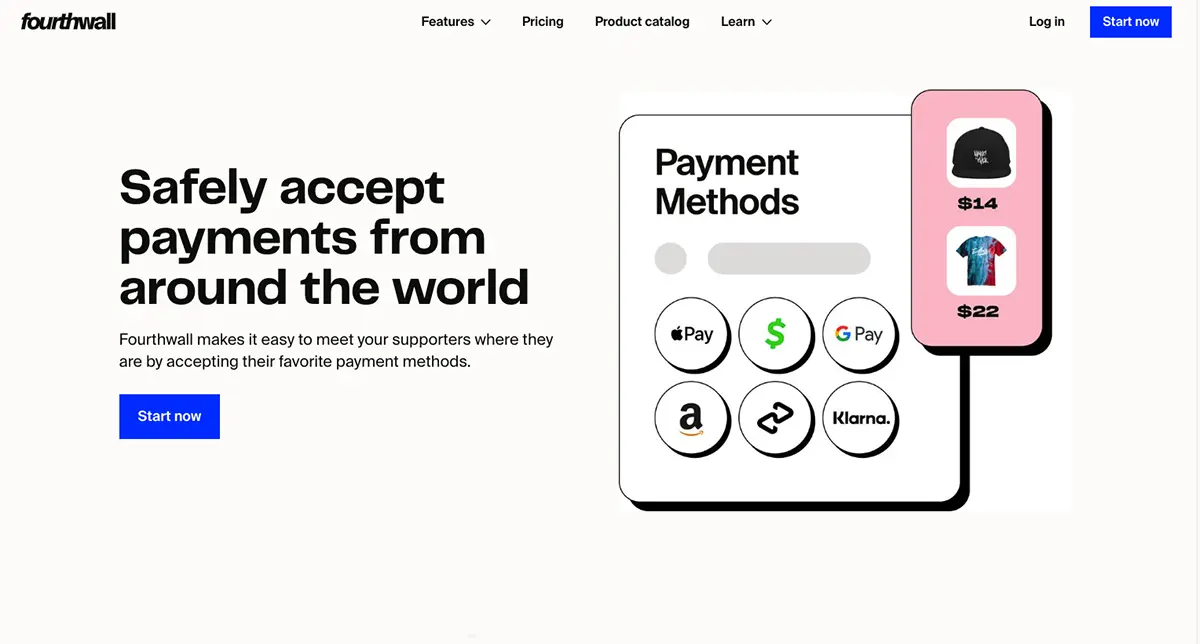
In today's digital marketplace, offering a variety of payment methods is crucial for catering to diverse customer preferences. Traditional payment options like credit and debit cards are still essential, but alternative methods such as Apple Pay, PayPal, and Klarna are becoming increasingly popular.
These methods offer convenience, security, and flexibility for online shoppers. For instance, Apple Pay allows for quick transactions using a mobile device, PayPal provides an easy way to pay using linked bank accounts or credit cards, and Klarna offers financing options that let customers buy now and pay later.
Additionally, the rise of cryptocurrency payments, including digital currencies like Bitcoin and Ethereum, is gaining momentum as more consumers and businesses embrace blockchain technology. Accepting cryptocurrencies can attract tech-savvy customers, offer reduced transaction fees, and enhance global accessibility. Early adoption of this trend can give businesses a competitive edge by appealing to a forward-thinking audience.
Fourthwall supports a seamless checkout experience by providing multiple payment options on its platform. This includes traditional methods and modern solutions like Discover, Apple Pay, Klarna, Cash App, and PayPal, ensuring that creators can offer their customers a flexible and user-friendly purchasing process. By integrating these diverse payment methods, Fourthwall helps creators cater to a wide range of preferences and enhance their overall customer experience.
10. Fast and Flexible Shipping

Fast and flexible shipping is essential for meeting modern consumer expectations, offering options like same-day or next-day delivery, as well as convenient choices such as delivery time slots or pick-up locations. In a competitive ecommerce environment, the ability to deliver quickly and accommodate various preferences can significantly enhance customer satisfaction, reduce cart abandonment rates, and foster repeat purchases.
Amazon Prime has set a high bar for shipping speed with its same-day delivery service in many areas. Retailers like Walmart and Target have also made substantial investments in flexible shipping solutions, including curbside pick-up and local delivery.
Fourthwall excels in providing fast and reliable shipping by partnering with top manufacturing and fulfillment centers across the US, UK, EU, and AUS. Our collaborations with leading shipping companies like UPS and DHL ensure that creators can offer their customers efficient, dependable, and cost-effective shipping worldwide.
With Fourthwall, shipping rates are dynamically calculated, reflecting the true shipping cost, and most items have a delivery window of 7-10 days. By integrating these advanced logistics solutions, Fourthwall helps creators deliver a seamless and satisfying shopping experience for their global audience.
11. Data Privacy and Security

Data privacy and security involve protecting customer data from breaches and ensuring that personal information is handled in compliance with regulations like GDPR and CCPA. As ecommerce grows, so does the need for robust security measures to protect consumer trust.
Data breaches can have devastating effects on a business's reputation and customer trust. Prioritizing data privacy and security is not only a legal obligation but also a competitive advantage, as customers are more likely to shop with brands they trust.
Apple's focus on user privacy, including features like App Tracking Transparency, has set a benchmark in the industry. Ecommerce platforms like Shopify also prioritize security by offering SSL encryption and fraud detection tools.
Ecommerce businesses should invest in advanced security measures, such as encryption, two-factor authentication, and regular security audits. Clear communication about privacy policies and data protection practices can also help build customer trust.
12. Global Expansion

Global expansion involves extending ecommerce operations to international markets, tapping into new customer bases and revenue streams. This trend is driven by the increasing ease of cross-border ecommerce, thanks to advancements in logistics, payment processing, and localization.
Expanding globally can offer significant growth opportunities, but it also presents challenges such as navigating different regulatory environments, managing international shipping, and understanding diverse customer preferences.
Zara has successfully expanded its ecommerce presence globally, with localized websites and marketing strategies tailored to different regions. Amazon's international expansion strategy has also made it a dominant player in global ecommerce.
Businesses considering global expansion should start by conducting market research to identify promising regions. It's important to adapt product offerings, marketing strategies, and customer service to meet the needs of local customers. Partnering with local experts or agencies can also help navigate the complexities of international markets.
How to Determine the Best Trend for Your Business
With so many trends to consider, businesses must prioritize those that align with their specific needs, resources, and customer base. Here’s a step-by-step framework to help you evaluate which trends to focus on:
- Understand Your Target Market: Analyze your customer demographics, preferences, and behaviors. Identify which trends resonate most with your audience.
- Assess Technological Readiness: Evaluate your current technology stack and determine what upgrades or investments are needed to implement new trends.
- Consider Your Budget: Prioritize trends that offer the best return on investment based on your budget constraints.
- Analyze the Competitive Landscape: Look at what your competitors are doing and identify gaps in the market where you can differentiate your business.
- Test on a Smaller Scale: Before fully committing to a new trend, consider running a pilot program or small-scale test to gauge its effectiveness and customer response.
- Stay Adaptable: The ecommerce landscape is constantly changing. Continuously monitor trends and be prepared to pivot your strategy as needed.
Start Implementing Ecommerce Trends With Fourthwall Today!
With the ecommerce landscape rapidly shifting, leveraging platforms like Fourthwall is essential to staying competitive and adapting to the latest trends in a competitive digital market.
Whether you're looking to adopt sustainable practices, enhance personalization, or streamline global expansion, Fourthwall empowers you to build a brand that stands out and connects with audiences worldwide.
So, get ready to join the future of ecommerce. Sign up with Fourthwall today and transform your passion into a thriving brand with endless possibilities!

